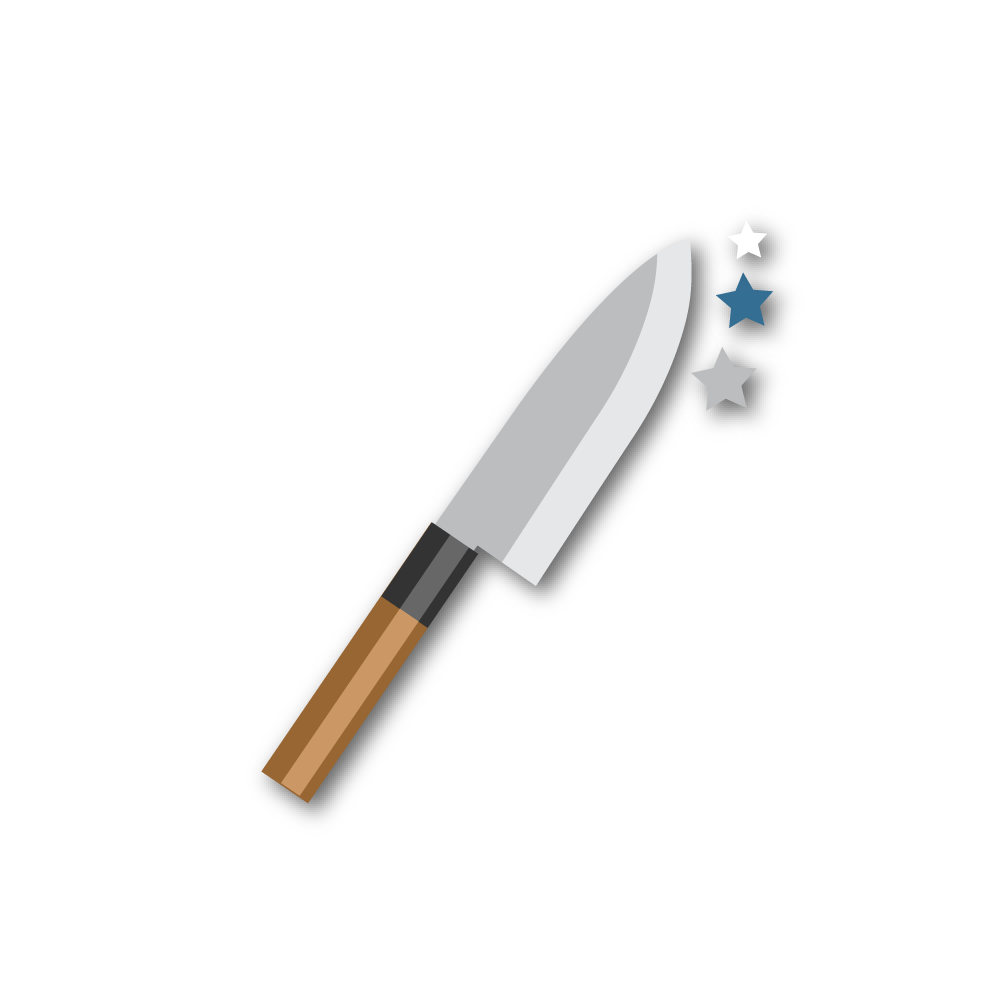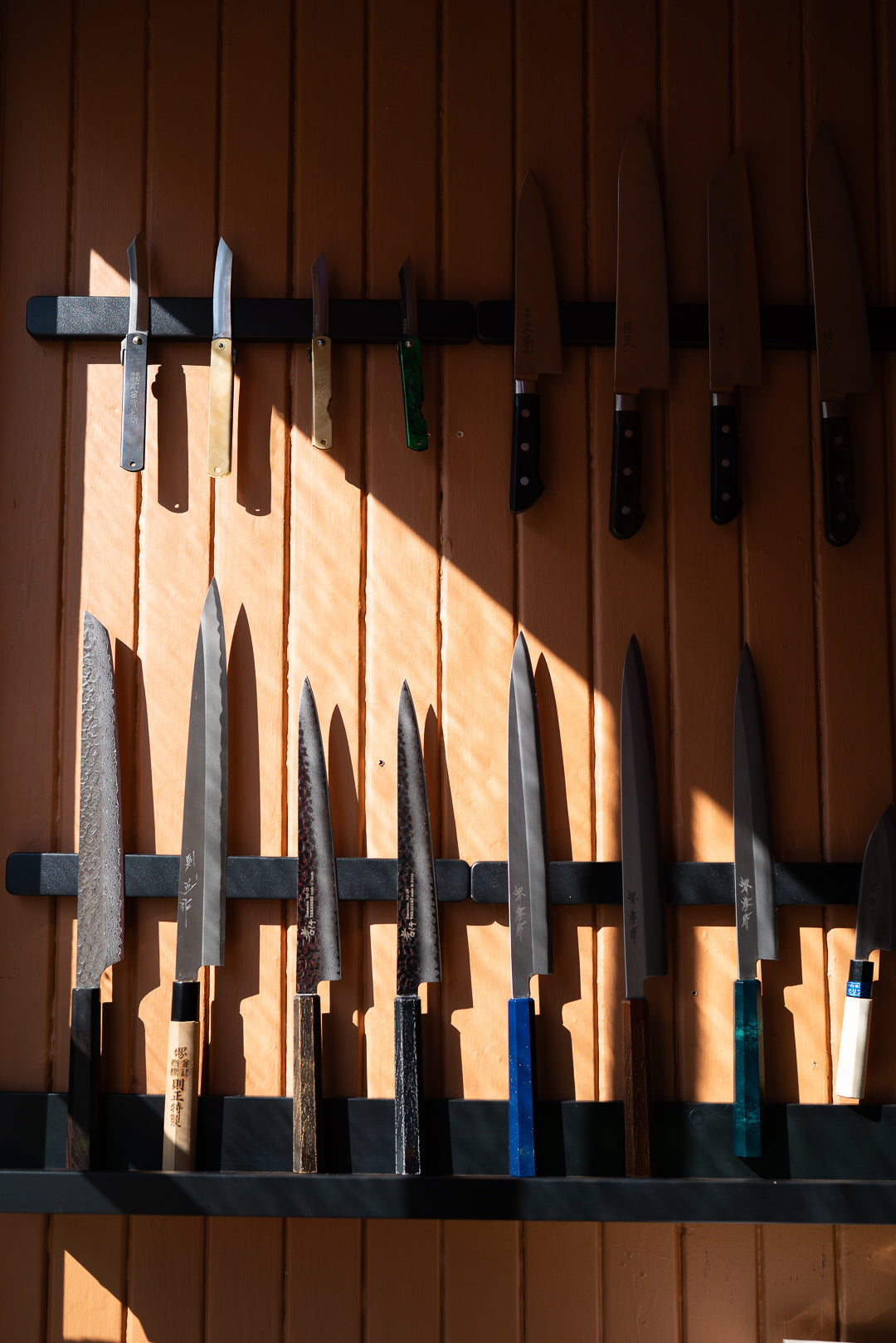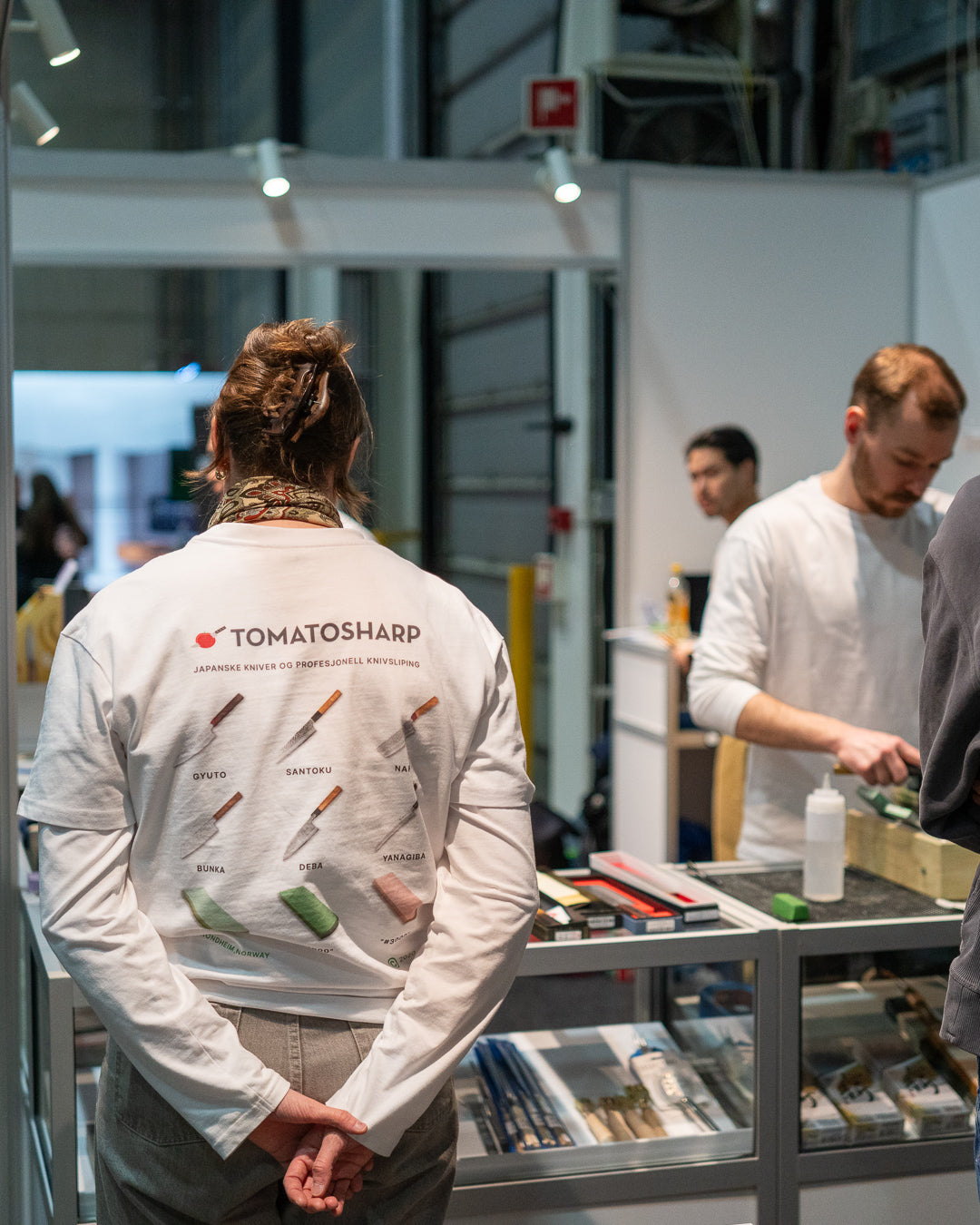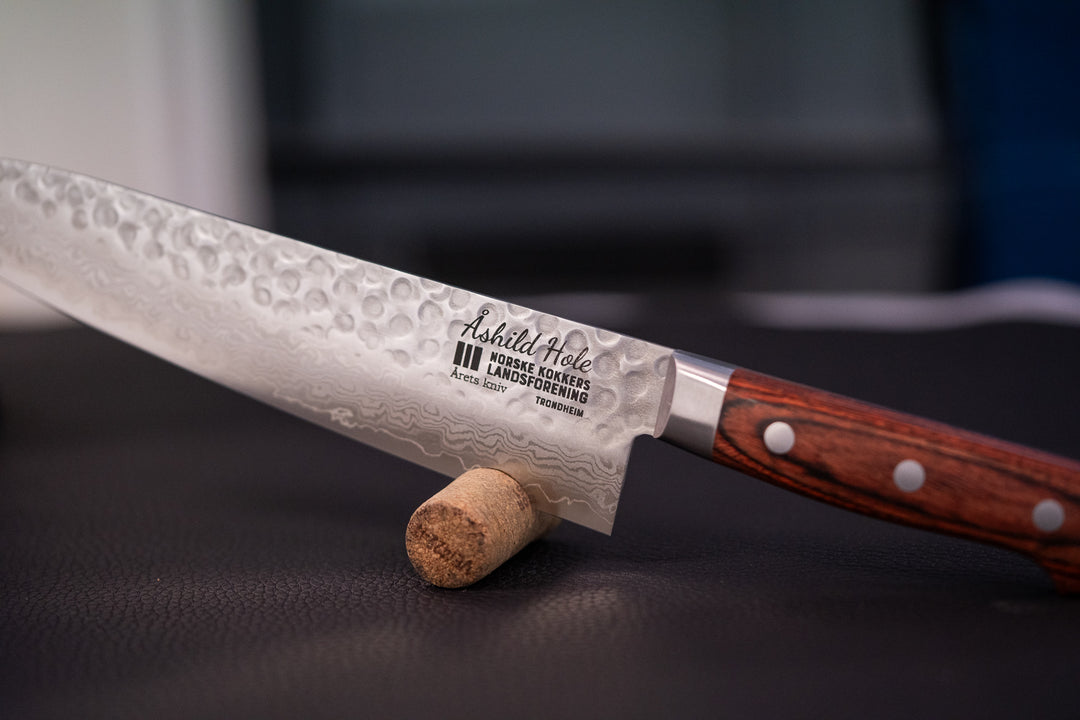KAI SHOSO Santoku 165 mm
- In stock, ready to ship
- Backordered, shipping soon
Shop nå. Betal med Klarna.

- Levering 1-3 virkedager
- Fri frakt over 1000kr
- 30 dagers åpent kjøp
| Knivtype | Santoku |
| Bladlengde | 165 mm |
| Høyre-/venstrehendt | For both |
| Slipefase | 50/50 |
| Håndtak | Stainless steel |
| Hardhet | 57-59 HRC |
| Ståltype | Rustfritt stål |
| Stål | 1K6 |
KAI Shoso Santoku is a perfect knife for those who want an all-round knife that is suitable for both meat, fish and vegetables.
The name "Santoku" originates from its full name "Santoku bocho" , which translates to three uses. These three areas of use are fine chopping, cutting and precision work with the knife.
KAI Shoso is part of the Seki Magoroku series, which is known for high-quality materials, great craftsmanship and careful detailing. The knives have an ergonomic stainless steel handle with a characteristic diamond pattern.
The handle has a seamless transition to the knife blade, which makes it well balanced in the hand.
The name Seki Magoroku is a combination of two well-known elements in the knife world in Japan. Seki is a city in Japan that is particularly known for its rich tradition of knife forging and its well-known knife smiths. Magoroku is a name associated with a well-known blacksmith who has become a symbol of exceptional sharpness.
Made in Japan
Santoku er den perfekte allroundkniven innenfor japanske kokkekniver, og navnet oversettes til tre bruksområder. Disse tre bruksområdene er kjøtt, fisk og grønnsaker, og den kan med andre ord brukes til det aller meste på kjøkkenet.
Bladet til en santoku er litt bredere enn en gyuto eller en vestlig kokkekniv, og gir derfor god plass til f.eks. større grønnsaker med litt høyde. Den har en karakteristisk tupp som gir eggen en større kontaktflate. Dette gjør at man kan kutte effektivt med en teknikk som kalles "push cut".
Et rustfritt stål med høyt karboninnhold, kjent for å holde seg skarp lenge med god rustbestandighet. Hardhet: 57–59 HRC. Ofte brukt i japanske kjøkkenkniver fra KAI
Bruk
Japanske kniver er vanligvis tynnere og mer delikate enn vestlige kniver, så de er ikke egnet for å kutte gjennom bein, frosne matvarer eller harde gjenstander. Bruk et mykere skjærebrett laget av tre, plast eller gummi og skjær med en rullende bevegelse i stedet for å presse ned med kraft.
Vask og oppbevaring
Vask kniven for hånd med mild såpe og varmt vann umiddelbart etter bruk. Tørk kniven med en myk klut eller et kjøkkenhåndkle for å forhindre rust. Oppbevar kniven på en sikker og tørr plass når den ikke er i bruk. Bruk gjerne en knivblokk, magnetisk knivholder eller knivslirer for å forhindre skader på eggen. Les mer
Vedlikehold
Vi anbefaler å bruke en keramisk brynestav i kombinasjon med en lærstropp for å vedlikeholde / skjerpe eggen. Dette gjør at kniven holder seg skarp mye lenger før den må slipes på stein. Ved sliping anbefaler vi våtslipesteiner for å få best resultat, samtidig som at man fjerner minimalt med materiale.





















